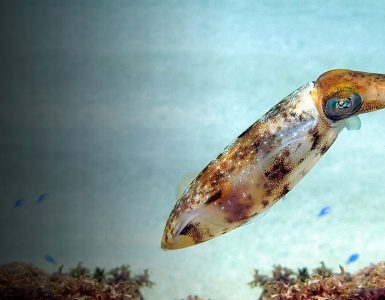A recent study by researchers from the University of Otago highlights new evidence of swift evolution in the native insect species of New Zealand – Zelandoperla fenestrate, a stonefly who has lost wings due to increased exposure to strong winds, because of massive deforestation.
The research, led by Ph.D. student Brodie Foster and published in Biology Letters, used comparisons of insect populations around the alpine ‘tree line’ in both forested and cleared sites and found that recent loss of forest has increased the distribution of flightless insects which were formerly limited to alpine grassland ecosystems. “Over a short period of just a few hundred years the study has found that many previously winged populations have evolved to become flightless,” Mr. Foster says.
There are two common types of stoneflies, one with wings and the ability to fly and the other with short or absent wings, and they are flightless. wingless type is more common at higher altitudes, where the winds are strong due to scarcity of trees, and the flighted population is found in the lower forested, alpine regions. These alpine forests have witnessed massive deforestation due to human invasion, therefore the study founds that, the elevation, where the insects could otherwise fly, can’t do so now.
The Maori began to burn down the forests that once covered much of New Zealand’s South Island centuries ago, which lead t other individual populations of stoneflies to abandon the flight. Brodie Foster with his team of other entomologists suggested that the extinction of New Zealand’s forests, which began after the colonization of the Maori archipelago, must have influenced the spread of the winged and wingless forms of Z. fenestrate. To test the hypothesis, they selected 5 different locations in the south of New Zealand, 3 of which, were burned down by Maori, causing a drop in the upper limit of tree growth, while 2 other locations had intact tree growth and number. The researchers then laid census at each of the selected points, along the streams and calculated the number of wingless and winged stoneflies. The observation of the relationship between the anatomical feature of the larva of a stonefly and an adult was done. They also observed the size of the wings. And concluded that at all locations, the ratio of winged to wingless freckles varies with height.

They found that, in two areas where forests are preserved, the transition from winged to wingless individuals begins at a higher altitude than in the three areas where the forests were burned out by the Maori. This is because the stoneflies are protected from the winds in those regions due to forests/trees and therefore can keep their wings and the ability to fly. The team also believes that there could be other factors responsible in addition to the wind like habitat stability, and temperature.
The authors fear that wingless species will not be able to find mates in the larger regions, thus causing genetic diversity, risking the health of the species, and elevating the risk of extinction in the insect. This is an excellent example of expeditious evolutionary changes provoked by human activities. In further research, Foster and colleagues plan to find out what genetic mechanisms underlie those changes.
















Add comment